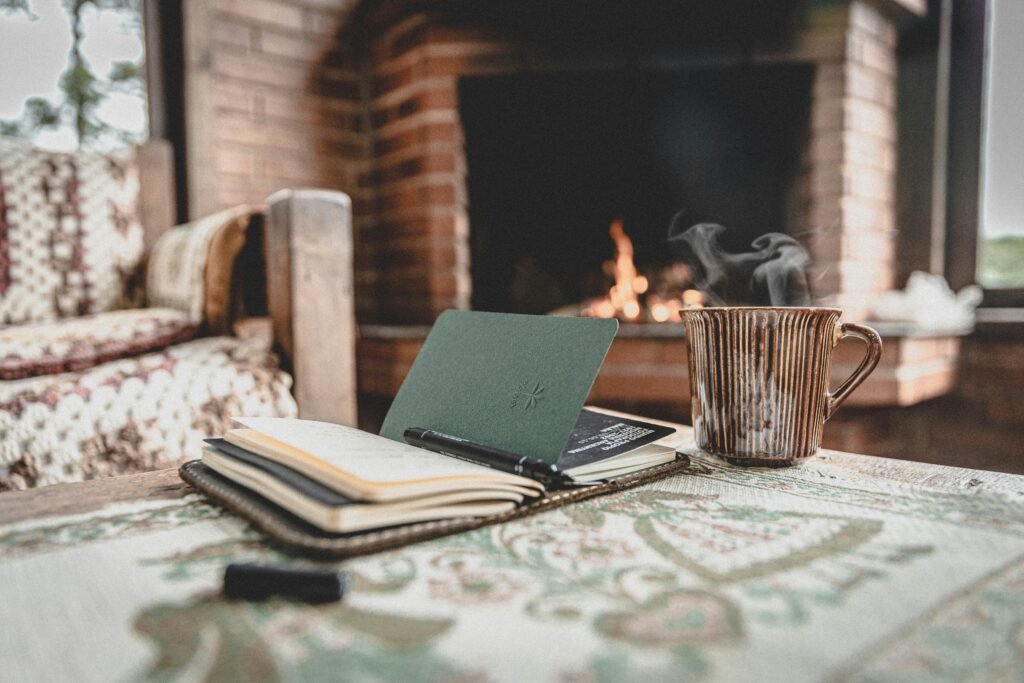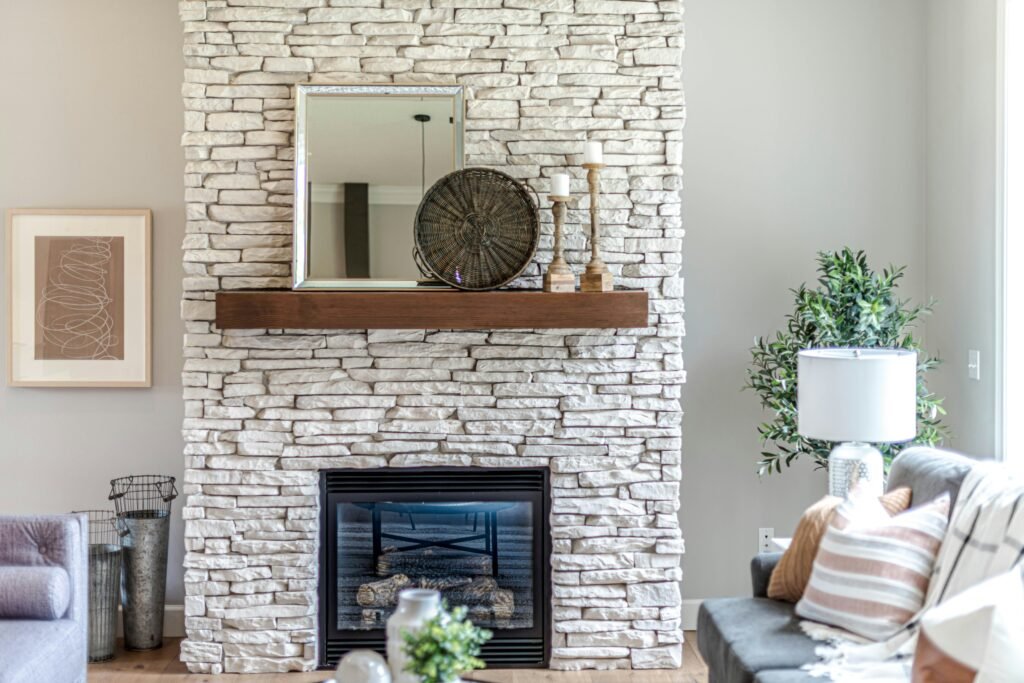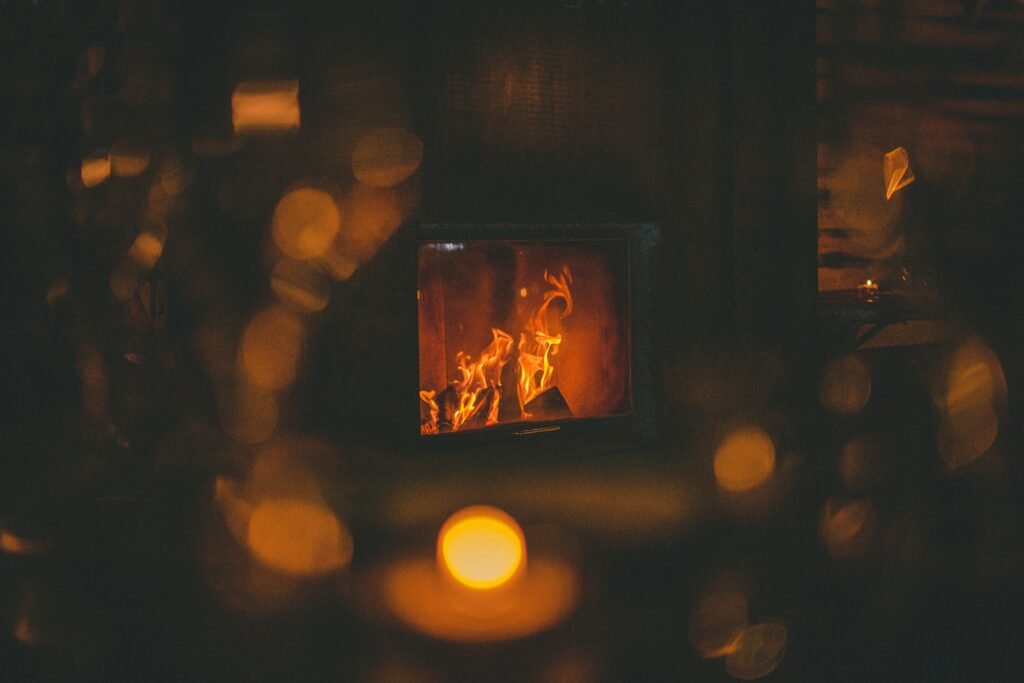If you’re fortunate enough to have a fireplace in your home, you know the unique comfort and charm it brings to any space. But to ensure that your fireplace continues to provide you with the ultimate bliss and cozy ambiance, it requires proactive maintenance. From regular cleaning to inspecting for any potential issues, taking care of your fireplace will not only enhance its efficiency but also ensure your safety and enjoyment for years to come. In this article, we will explore some essential tips and techniques for maintaining your fireplace, so you can continue to experience the blissful warmth and relaxation it offers.

This image is property of images.unsplash.com.
Cleaning the Fireplace
Removing ashes
To start, cleaning your fireplace requires removing any leftover ashes from previous fires. Allow the ashes to cool completely before attempting to remove them. Using a fireplace shovel, carefully scoop out the ashes and transfer them to a metal ash bucket. Remember to wear protective gloves and a dust mask to avoid inhaling any fine ash particles.
Sweeping the chimney
A clean and functioning chimney is essential for proper fireplace performance. Regularly sweeping the chimney helps to remove soot and debris that can build up and cause blockages. It is recommended to hire a professional chimney sweep for this task to ensure a thorough cleaning. A chimney sweep will use specialized brushes and equipment to effectively remove any obstructions, ensuring your chimney is clear and ready for use.
Cleaning the firebox
The firebox is the area where the actual fire burns, and it can accumulate ash and debris over time. Use a small hand broom and dustpan to sweep out any loose debris from the firebox. You can also use a vacuum cleaner with a brush attachment to remove any stubborn ash remnants. Once the firebox is clean, dispose of the debris in the appropriate manner and ensure there is no residue left behind.
Wiping down the fireplace surround
The fireplace surround can accumulate dust, soot, and other particles over time. Wipe down the fireplace surround regularly using a damp cloth or sponge. For stubborn stains or buildup, a mild detergent or fireplace cleaning product can be used. Gently scrub the affected areas and rinse with clean water. Be sure to dry the surrounding surfaces thoroughly to prevent water damage or discoloration.
Inspecting and Repairing
Checking for chimney obstructions
Inspecting your chimney for any obstructions is crucial to ensure proper airflow and prevent potential hazards. Look for signs of bird nests, leaves, or other debris that may be blocking the chimney. Use a flashlight to illuminate the chimney and check for any visible obstructions. If you suspect a significant blockage, it is best to consult a professional chimney sweep who can safely remove the obstruction and assess any damage.
Examining the damper
The damper controls the airflow in your fireplace and should be regularly inspected for functionality. Open and close the damper to ensure it moves freely and seals tightly when closed. If the damper is not functioning properly, it may need adjusting or repair. Contact a professional if you are unsure how to properly examine or repair your damper.
Inspecting the chimney cap
The chimney cap sits on top of the chimney and serves as a protective barrier. Regularly inspect the chimney cap for any damage, such as cracks or loose fittings. A damaged chimney cap can allow animals or debris to enter your chimney, causing potential blockages or other issues. If you notice any damage, have it repaired or replaced to maintain the integrity and functionality of your chimney.
Checking for cracks or damage
Inspect the interior and exterior of your fireplace for any cracks or signs of damage. Cracks can lead to the escape of smoke or other potentially harmful gases. Contact a professional if you identify any significant cracks or damage that may require repairs. Prompt attention to these issues can prevent further deterioration and ensure the safety of your fireplace.
Repairing damaged bricks or mortar
Over time, the bricks and mortar in your fireplace can become damaged due to exposure to heat and the elements. Cracked bricks or deteriorating mortar joints should be repaired to maintain the structural integrity of your fireplace. Consult a professional mason who can assess the damage and make the necessary repairs. It is important to address these issues promptly to prevent further damage and potential safety hazards.
Maintaining Ventilation
Ensuring proper airflow
Proper airflow is essential for efficient combustion and a well-functioning fireplace. Check that the air vents and grates in your fireplace are clean and clear of any obstructions. Remove any debris, dust, or ash build-up that may be blocking the airflow. This will ensure that the fire burns evenly and that smoke is properly vented through the chimney.
Cleaning or replacing air vents or grates
Air vents and grates can accumulate dirt and soot over time, reducing their effectiveness. Regularly clean these components to maintain optimal airflow. Use a small brush or vacuum cleaner to remove any built-up debris. If the vents or grates are damaged or excessively worn, consider replacing them to ensure proper ventilation.
Preventing blockages
Regularly inspect your chimney for any signs of potential blockages, such as leaves, bird nests, or debris. Blockages can restrict proper airflow, leading to inefficient burning and increased smoke production. Keep the area around your chimney clear of overhanging branches or debris that may fall and obstruct the chimney opening. Taking proactive measures to prevent blockages will help maintain optimal fireplace performance.
Managing carbon monoxide detectors
Carbon monoxide (CO) is a colorless and odorless gas that can be produced by incomplete combustion. It is important to install carbon monoxide detectors near your fireplace and ensure they are in proper working condition. Test the detectors regularly and replace batteries as needed. Carbon monoxide detectors can provide an early warning sign of potential gas leaks, allowing you to take immediate action to ensure your safety.
Choosing the Right Wood
Selecting seasoned firewood
The type of wood you use in your fireplace affects its performance and longevity. Always choose seasoned firewood, which is wood that has been properly dried for at least six months. Seasoned firewood burns more efficiently and produces less smoke and creosote buildup. It is important to properly store and dry your firewood to ensure it is ready for use.
Avoiding softwood and treated wood
Softwood, such as pine or cedar, should be avoided as it tends to produce more creosote and can create excessive soot buildup in your chimney. Treated or painted wood should also be avoided as it can release harmful chemicals when burned. Stick to using hardwoods like oak, maple, or birch, as they burn hotter and longer, providing a more efficient and enjoyable fire.
Utilizing hardwood for longer burn time
Hardwood logs are denser and contain more energy than softwood logs, resulting in a longer burn time. Choosing hardwoods for your fireplace ensures a sustained and cozy fire that will provide warmth throughout the evening. Remember to properly season hardwood logs to maximize their burn time and efficiency.
Storing firewood properly
Properly storing firewood is essential to maintain its quality and ensure it is ready for use. Store firewood outdoors, elevated off the ground, and covered with a waterproof tarp or in a firewood shed. This will protect the wood from moisture and allow it to continue drying. Avoid stacking firewood directly against your home as it can attract pests or introduce moisture into the walls.

This image is property of images.unsplash.com.
Efficient Fireplace Use
Opening the damper fully
Ensure the damper is fully open before starting a fire in your fireplace. This allows for proper ventilation and ensures that the smoke goes up the chimney instead of filling your home. Keep the damper open until the fire has completely extinguished and the embers have cooled. Closing the damper too soon can result in a buildup of smoke and hazardous gases.
Using the fireplace doors or screen
If your fireplace is equipped with glass doors, keep them closed while the fire is burning. This helps to prevent sparks or embers from escaping into the room. The glass doors also act as a barrier, reducing heat loss and increasing the efficiency of your fireplace. If your fireplace does not have glass doors, use a wire mesh screen to achieve the same effect.
Controlling the burn rate
Controlling the burn rate of your fire helps to maintain a steady heat output and maximize efficiency. Start by using smaller pieces of firewood and gradually add larger logs as the fire progresses. Avoid overcrowding the firebox, as this can restrict airflow and result in a smoky or inefficient fire. Adjust the air vents or damper as needed to regulate the burn rate and heat output.
Placing the logs properly
Proper log placement is important for efficient burning and reducing smoke production. Stack logs in a crosswise or “log cabin” arrangement, allowing for adequate airflow between the logs. Avoid placing logs too close together, as this can create a smoldering fire with poor combustion. Leave enough space for the flames to naturally reach and ignite each log, resulting in a cleaner and more effective fire.
Practicing Safety Measures
Keeping flammable items away
Ensure that any flammable items, such as furniture, rugs, or curtains, are kept at a safe distance from the fireplace. Sparks or embers can sometimes escape the firebox, and having flammable items nearby increases the risk of accidental fires. Create a designated clear zone around the fireplace to minimize the chance of flammable materials igniting.
Installing a fireplace gate or screen
Installing a fireplace gate or screen is an effective way to protect children and pets from coming into direct contact with the fireplace. These safety barriers act as a physical barrier, preventing accidental burns or injuries. Choose a gate or screen that securely attaches to the fireplace to ensure maximum safety.
Using fireplace tools correctly
It is essential to use fireplace tools correctly to prevent unnecessary accidents or injuries. Familiarize yourself with the proper use of each tool, including the poker, tongs, and brush. Use the poker to safely adjust logs or move burning materials within the firebox. Use the tongs to add or remove logs, and the brush to clean the firebox. Always handle these tools with caution and be mindful of hot surfaces.
Keeping children and pets supervised
As a responsible fireplace owner, it is important to supervise children and pets when the fireplace is in use. Children should never be left unattended near an active fireplace, as they may unknowingly touch hot surfaces or be tempted to play with fire. Similarly, pets should be closely monitored to prevent accidental burns or damage to the fireplace. By keeping a watchful eye on your loved ones, you can ensure their safety and the longevity of your fireplace.

This image is property of images.unsplash.com.
Utilizing Fireplace Accessories
Using a fireplace grate
A fireplace grate is a must-have accessory for optimal fireplace performance. It elevates the logs off the bottom of the firebox, allowing for better air circulation and more efficient burning. The grate also prevents logs from rolling out of the firebox and provides a stable base for the fire to burn on. Choose a grate that is the appropriate size for your fireplace to ensure maximum efficiency.
Using a fireplace insert or blower
A fireplace insert or blower can greatly enhance the efficiency of your fireplace by redistributing the warm air throughout your home. These accessories help to circulate the heat generated by the fire, preventing it from being solely absorbed by the fireplace surround. Consult a professional to determine which type of insert or blower is best suited for your specific fireplace.
Employing fire-resistant rugs or mats
To protect your flooring and add an aesthetic touch to your fireplace area, consider using fire-resistant rugs or mats. These accessories are specially designed to withstand high temperatures and protect against sparks or embers that may escape the firebox. Place the rug or mat in front of the fireplace, ensuring it is of an adequate size to catch any debris or potential damage.
Decorating the Fireplace
Choosing suitable decor elements
Decorating your fireplace can add a personal touch and create a cozy ambiance in your living space. Choose decor elements that are suitable for the fireplace environment and can withstand the heat generated. Opt for fire-resistant materials such as metal or ceramic instead of flammable fabrics or plastics. Consider decorative elements that complement the overall style and aesthetic of your home.
Arranging seasonal displays
Take advantage of seasonal themes by arranging displays on or around your fireplace. Incorporate seasonal foliage, such as wreaths or garlands, to add a festive touch. Utilize natural elements like pinecones, dried flowers, or autumn leaves to bring the beauty of the outdoors inside. Changing your fireplace decor throughout the seasons can help create a dynamic and inviting atmosphere in your home.
Adding candles or fairy lights
For an additional touch of warmth and ambiance, consider adding candles or fairy lights to your fireplace decor. Candles can create a soft, flickering glow and give the illusion of a real fire. Opt for flameless candles for a safer alternative. Fairy lights can be woven around the fireplace or draped along the mantel, adding a whimsical and enchanting element to your fireplace display.
Annual Professional Inspection
Scheduling a chimney sweep
To ensure the long-term safety and performance of your fireplace, it is highly recommended to schedule an annual chimney sweep. A professional chimney sweep will thoroughly clean your chimney, removing any soot, debris, or potential blockages. They will also inspect the chimney for any signs of damage or structural issues, allowing you to address any concerns before they worsen.
Hiring a professional fireplace inspector
In addition to a chimney sweep, it is important to have a professional fireplace inspector assess the overall condition of your fireplace. They will inspect the interior and exterior components, such as the firebox, damper, chimney cap, and surrounding areas. Any necessary repairs or maintenance can be identified and addressed to ensure the safe and efficient operation of your fireplace.
Checking for creosote buildup
Over time, creosote can accumulate in your chimney, a highly flammable substance that can pose a serious fire hazard. During the annual inspection, the chimney sweep will check for creosote buildup and remove it using specialized tools. Regular cleaning and maintenance will minimize the risk of chimney fires and ensure the longevity of your fireplace.
Identifying potential safety hazards
A professional inspection will identify any potential safety hazards associated with your fireplace. This may include cracks in the firebox or chimney, loose or deteriorating mortar joints, or damaged components. By identifying these hazards, you can take the necessary steps to address them promptly and prevent further damage or safety risks.
Preventing Creosote Buildup
Burning seasoned wood
One of the most effective ways to prevent creosote buildup is to burn seasoned wood. Seasoned firewood has a lower moisture content, resulting in cleaner and more efficient combustion. Wood with high moisture content produces more smoke and increases the likelihood of creosote formation. Always ensure that the firewood you use is properly seasoned and dry.
Avoiding restricted airflow
Restricted airflow in your fireplace can contribute to creosote buildup. Avoid closing the damper or air vents too early, as this can lead to incomplete combustion and increased creosote production. Keep the damper and air vents fully open during the burning process to ensure proper ventilation. Adequate airflow will help reduce the amount of creosote that forms within the chimney.
Regularly cleaning the chimney
Regularly cleaning your chimney is crucial to prevent creosote buildup. As mentioned earlier, schedule an annual chimney sweep to remove any accumulated creosote and other debris. In addition to professional cleaning, you can also perform routine maintenance by inspecting the chimney and removing visible soot or creosote deposits. Ensure thorough cleaning to maintain a safe and efficient fireplace.
Utilizing creosote control products
Another preventive measure against creosote buildup is the use of creosote control products. These products can be added to the fire periodically to help break down and reduce the formation of creosote. However, it is important to note that while these products can be beneficial, they should not replace regular cleaning and maintenance. They should be used as a supplementary treatment to support overall chimney health.
By following these comprehensive cleaning, maintenance, and safety measures, you can ensure that your fireplace remains a focal point of joy and comfort in your home. Regular care and attention will not only prolong the lifespan of your fireplace but also provide a safe and efficient source of warmth for you and your loved ones. So take the time to maintain your fireplace properly and enjoy the ultimate bliss it brings to your living space.




